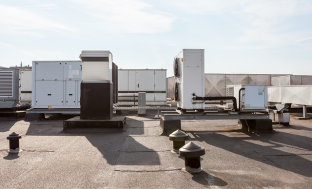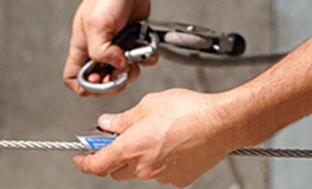latest news
Correct fall arrest specification
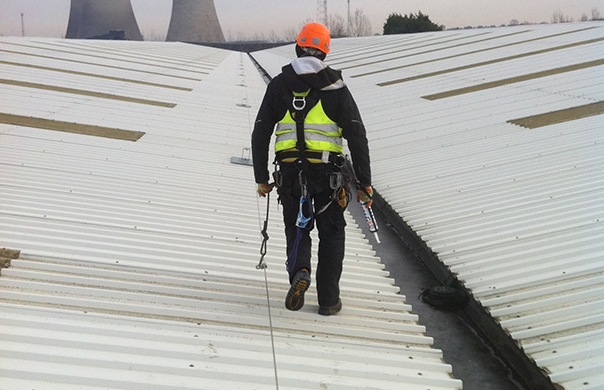
By Mark Dolan, General Manager, Roof Edge Fabrications
In previous Blogs I’ve outlined the different forms of fall protection, and why fall arrest systems are a last resort under the hierarchy of control. The main reason for this is that these types of system are totally reliant on not only correct usage, but more importantly, correct specification.
Correct specification is a complex issue, get it wrong and the consequences could quite literally be fatal.
What is A Fall Arrest System?
Personal fall arrest is an essential requirement whenever work is being carried out at height and there are unprotected edges or where you are unable to eliminate the risk of a fall. Systems typically consist of an anchor, connection device and a body support.
- Anchors: These are a secure point for attachment for lifelines and lanyard and should have a minimum breaking strength of 10kN or be engineered for a specific system with a safety factor of 2:1.
- Connectors: Connecting devices can be a simple restraint lanyard, a deceleration lanyard which limits the force on a person by dissipating energy during a fall or a self-retracting lanyard/lifeline which is designed to lock in the event of a fall.
- Body support: This would preferably be a full body harness which distributes the fall impact throughout the body.
When using fall protection systems such as these, you must also consider rescue and retrieval of the victim once a fall has been arrested. A rescue plan must be in place and suitable equipment available to enable a rescue.
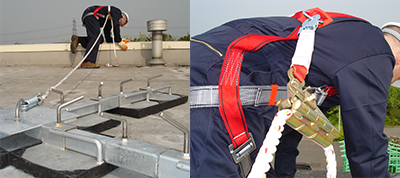
Why is Specification Complex?
Specification of a fall arrest system should only be carried out by a competent person or company. There a number of issues which need to be considered as part of the specification process:
Impact Force
This is a force which delivers a shock or high impact over a short period of time when two or more entities collide. When a person falls from height the maximum impact force that a full body harness can withstand is 6kN, while for the anchorage point it’s 10kN. In order to calculate the impact for a fall protection system you need to consider the fall distance, the weight of the personand the attachment method, for example a self-retracting lifeline or a deceleration lanyard.
Compatability of Equipment
Equipment compatibility is essential. For example, locking snap hooks must only be used with compatible D-ring connectors. A good way to ensure compatibility is to purchase all fall arrest equipment from the same manufacturer.
Fall Clearance Distance
If a fall protection system is designed properly it should protect the worker from contact with any lower level, obstruction or the ground, but in order to do this you need to take into account fall distances:
Free Fall Distance
When a person falls, their fall is not arrested immediately. This free fall distance is measured from the anchorage point to the point in which the system starts to arrest the fall and excludes the deceleration distance and lanyard/harness elongation.
Total Fall Distance
The total fall distance is the distance the operative fell from where they were standing to the position of their feet after the fall and includes both free fall and deceleration distances in the measurement. Properly designed fall arrest systems should protect workers from contact with any lower level or obstruction, typically with no more than a six-foot free fall.
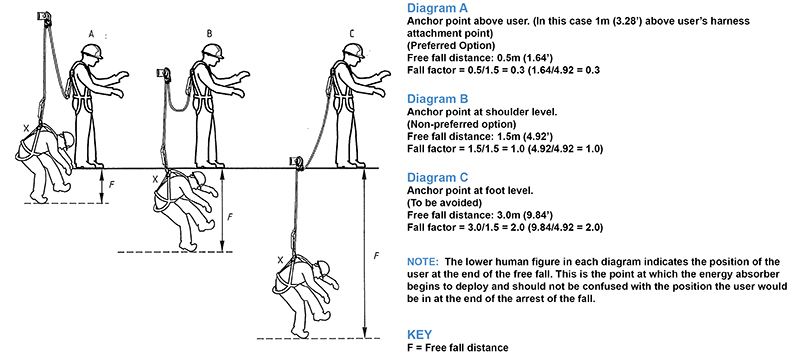
Competency
As you can see, specification of fall arrest systems is a complex matter and should only be carried out by those who are competent and have a thorough understanding of the different issues which need to be considered. As I said at the beginning, get this wrong and the consequences will be life threatening.
Related Posts
Work at Height - Correct Equipment Selection

